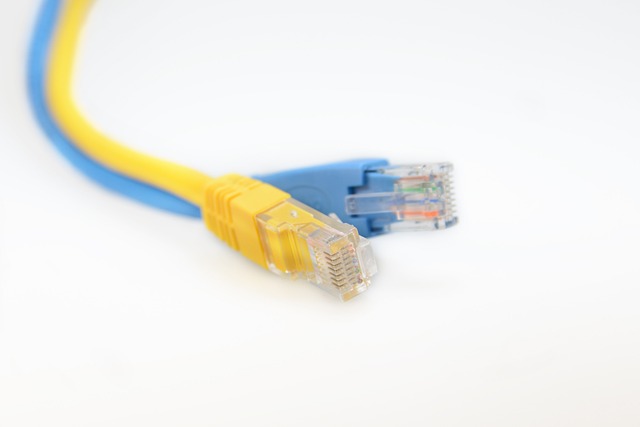Wireless access cabling is vital for optimizing network performance with WAPs. Choosing appropriate cable types like Cat6+, managing length and termination, ensures robust signal transmission. Structured cabling offers advantages in large-scale deployments, simplifying maintenance and enhancing Wi-Fi coverage. Strategic planning, including AP density and placement, uses high-performance cables for reliable data transfer. Regular testing post-installation ensures optimal network performance and future-proofing.
“Enhance your Wi-Fi network’s performance with structured cabling—a game-changer for modern connectivity. This comprehensive guide explores the art of optimizing wireless access points (APs) through strategic cabling infrastructure design. From understanding AP requirements to implementing and testing for peak efficiency, we delve into the benefits that structured cabling brings. Discover how this approach revolutionizes network coverage, reliability, and speed, ensuring your Wi-Fi keeps up with today’s digital demands.”
Understanding Wireless Access Point Requirements
Wireless access points, or WAPs, are integral to modern networking infrastructure. Understanding their specific requirements is crucial for implementing efficient structured cabling systems. Each WAP has unique needs in terms of bandwidth capacity, signal strength, and connectivity options, which must be carefully considered during installation.
The right wireless access cabling plays a pivotal role in ensuring optimal performance. This includes selecting appropriate cable types (like Cat6 or higher), ensuring sufficient length for coverage, and proper termination to minimize signal loss. By aligning the cabling infrastructure with the WAP’s requirements, you can create a robust network foundation capable of supporting high-speed data transmission and seamless connectivity for users across extensive areas.
Benefits of Structured Cabling for Wi-Fi Networks
Structured cabling offers numerous advantages for deploying and managing wireless access points (WAPs) and networks. Firstly, it provides a centralized and organized system that simplifies the installation process. By using a structured approach to cable placement and management, IT professionals can efficiently connect multiple WAPs to the network backbone with minimal hassle. This streamlines the deployment process, especially in large-scale deployments or complex network architectures.
Moreover, structured cabling enhances network performance and reliability. It ensures consistent and high-quality signal transmission between WAPs and users’ devices. The organized layout minimizes signal interference, allowing for optimal Wi-Fi coverage and speed. Additionally, structured cabling makes troubleshooting and maintenance easier, as cable connections and configurations are easily identifiable and accessible, facilitating faster issue resolution.
Designing a Cabling Infrastructure for AP Placement
When designing a cabling infrastructure for Wireless Access Point (AP) placement, the primary goal is to create a robust and flexible network backbone that supports current needs while allowing for future expansion. This involves careful planning and consideration of factors such as AP density, signal strength requirements, and potential interference sources. A well-structured cabling system utilizes category 6 or higher Ethernet cables to ensure high-speed, reliable data transmission between the APs and core network devices.
The layout should be designed with a hierarchical structure in mind, incorporating central switches connected to distribution switches, which then feed into access points. This hierarchical design not only simplifies management but also enhances fault isolation, allowing for quicker troubleshooting and maintenance. Additionally, it’s crucial to consider the physical placement of APs, ensuring they are strategically located to provide optimal signal coverage throughout the desired area while minimizing cable length and potential signal degradation.
Implementation and Testing for Optimal Performance
Proper implementation and testing are vital steps in ensuring optimal performance of Wi-Fi access points and networks, built on a foundation of structured cabling. During installation, it’s crucial to adhere to best practices for wireless access cabling, including using high-quality cables, proper routing, and secure connections at every junction. This physical infrastructure forms the backbone, enabling seamless data transfer between devices and access points.
After initial setup, thorough testing is essential. This involves assessing signal strength, network speed, and latency across various locations within the coverage area. Using specialized tools, network administrators can identify weak spots, interference sources, or cabling issues that may hinder performance. Regular testing and adjustments ensure the network remains optimized for current and future demands, providing reliable, high-performance Wi-Fi access throughout the facility.
Structured cabling for wireless access points (APs) is a game-changer in creating robust, efficient Wi-Fi networks. By understanding AP requirements, leveraging structured cabling’s benefits, and carefully designing infrastructure, you can implement high-performing networks that meet today’s digital demands. This systematic approach ensures reliable connectivity, enhancing user experience and enabling seamless operations for any organisation. So, when it comes to building a future-proof network, consider the power of structured cabling for your Wi-Fi access points.
